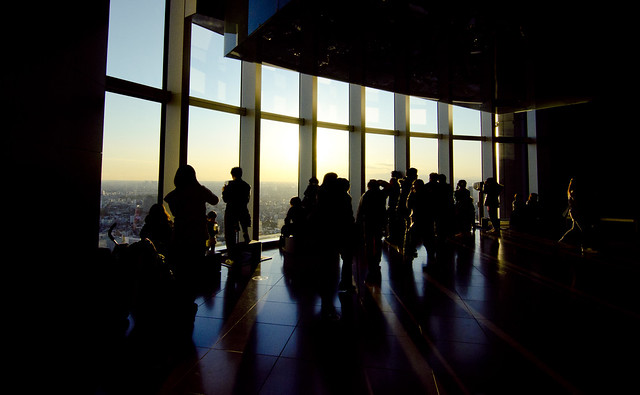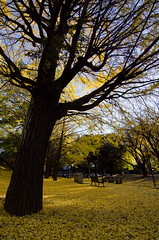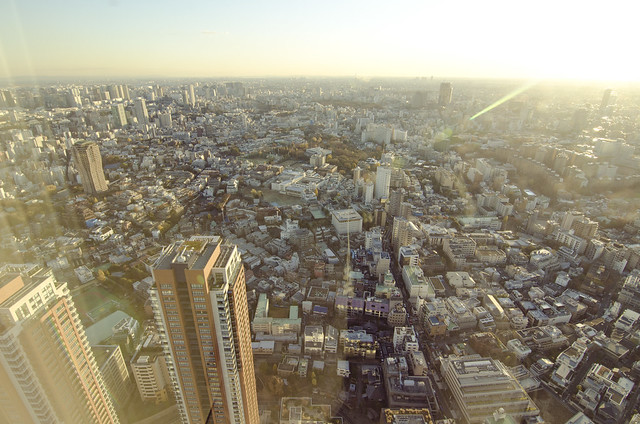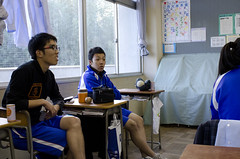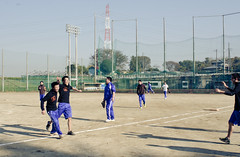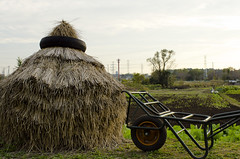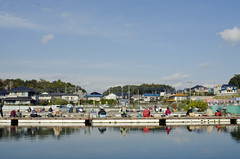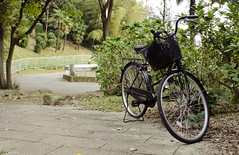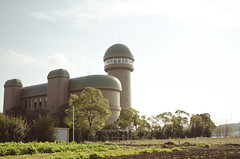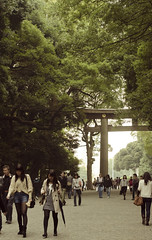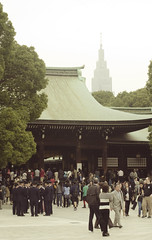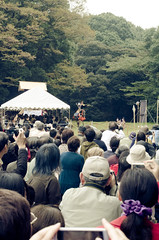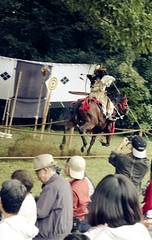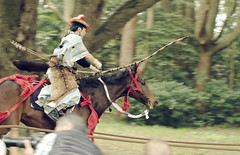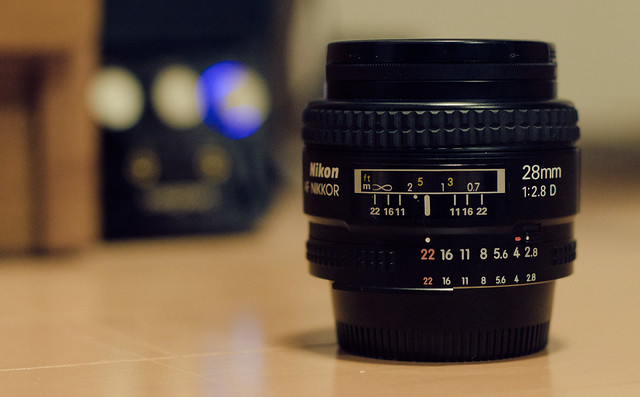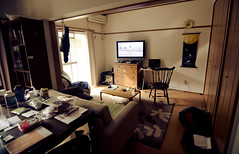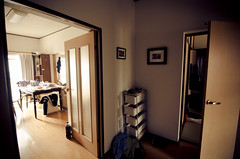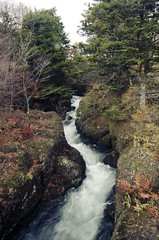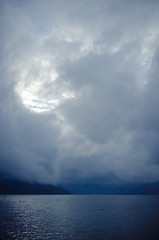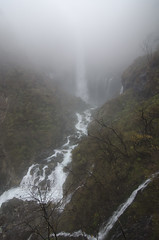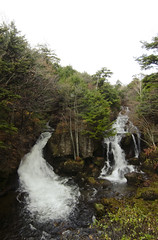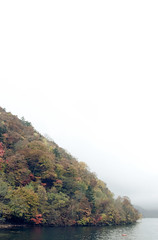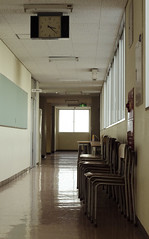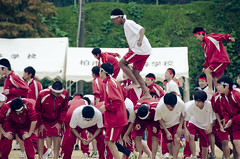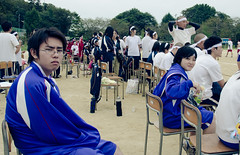Nick,
One of the many things that I love about the Japanese language is the interesting (and often sophomorically hilarious) ways that its intricate orthographic system confounds consistent meaning. I'm told that a lot of this has to do with
kanji, so let's start there.
Kanji
1 is a "logographic" writing system adopted from Chinese
hanzi characters imported through cultural trade during the Han Dynasty around 57AD. Later, this complicated system of emblematic pictographs was simplified. Around the 9th century, industrious women poets--though banned from formal education, including instruction on the complex hanzi writing system--recognized how stupid it was to have one symbol for every single word in your language and so settled into the 46-character syllabary system that we know as hiragana.
Anyway, just as the logographs of kanji were inherited from it's Chinese hanzi parent, so too were the Chinese hanzi pronunciation. Today, this category of kanji-pronunciation is commonly known as "on'yomi" (音読み), or "on" pronunciation.
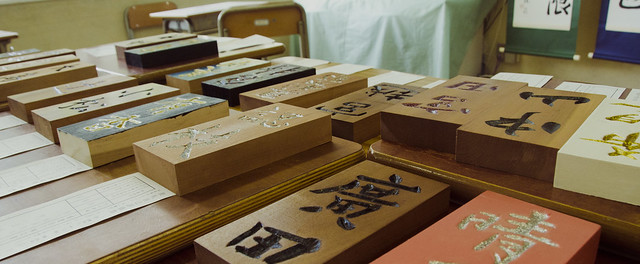
Problem Number 1:
As there are nearly twice as many sounds in the Chinese linguistic syllabary, many of the possible Chinese pronunciations were lost or conflagrated into the Japanese speaking system
2 Mary Noguchi writes, "When Japan imported kanji wholesale from China, the Chinese pronunciations of kanji words were transliterated into the narrower range of the Japanese phonetic system; the result was a great number of compound words with the same pronunciation." "Kanji Clinic #24: Is there any relief from Japanese homophone headaches?"
The Japan Times, 9 Aug. 2002, <
http://www.kanjiclinic.com/kc24final.htm>.
Pinyin.info suggests that Chinese has 410 distinct syllable sounds, while Japanese has only 349, and cites a study that reports that Japanese has three-times more homophones than those found in Chinese.
2.
Not satisfied with these proliferating approximate (and overlapping) pronunciations--and probably just as disenchanted the notion of maintaining cultural dependencies upon China--Japan, doing what Japan does best, created a "Japanese" style of reading kanji: the "kun'yomi" (訓読み) method. No longer would the Japanese writing system be tied directly to the Chinese language. Instead, all conscripted kanji would be given over to the Japanese lexicon. Let me explain…
[I will use the "for instance" that Wikipedia uses because it's a good one.]
Take, for instance, the kanji for "east," as represented by 東. The on-yomi (Chinese) pronunciation of this logograph is "tou" (とう). Lo and behold, may it be said, that long before Japan adopted the "tou" logograph (東), Japan already had a word for "east" (that being "higashi": ひがし
3 Let it actually be said that Japan had TWO words for "east," higashi and azuma (あずま), so frustration over why they needed a third is quite understandable.
3). Thusly, these additional "kun" readings were later appended to the range of any kanji's readings, not ever fully replacing the original “on” reading.
This means, though most kanji have one specific locus of meaning, there is a nexus of pronunciations tied to each logographic pole, often only known through contextual expression: when by itself, 東, as an “ideogram” (指事文字: しじもじ: Shiji-moji), is almost always pronounced using the kun expression "higashi,” but will often be seen tied to a secondary figure that activates a secondary reading. One such example is when 東 is bound to the “kyou” (京) kanji, forming the compound "東京", which, of course, is the kanji for Tokyo, thusly requiring us to read 東 using the original on-yomi pronunciation.
This polyphony of sign:signified readings, however, is where we get the interesting system of Japanese "abbreviation."
Let's take 柏市立柏高等学校 (Kahiwashiritsu Kashiwa Koukou), which is roughly translated as "Kashiwa-City Municipal Kashiwa High School
4 This would be akin to "Torrance Unified School District Torrance High School.”
4." Now, much like how Westerners love giving beautiful, ornate names to institutions and buildings only to subsequently hate pronouncing all of those fancy syllables, Japanese people also do this. While we would normally crop words like "Torrance High School" into something more manageable by pressing words into acronyms based on initials--like "T.H.S."--kanji compounds would be pared down to their more essential pieces. In this case to 市 (designating the type of school: Municipal or "city funded"--versus private or prefectural--from "柏市立") and its location, 柏 (Kashiwa), omitting the values of "高等学校" (high school) as assumed. This leaves us with "市柏". Now that these characters are freed from their original contextual confines, we can talk about reinterpreting the logographs.
No longer appended to the locative “city” kanji (柏市 - Kashiwa-shi, or "Kashiwa city"), 市 is no longer bound to its dependent
5 Re: serving as a modifier.
5 "on" reading ("shi") but is given over to its "kun" (native) reading as an independent logograph, which is "ichi," giving us "Ichi-Kashi(wa)" instead of "Shi-Kashi." Sometimes 立 (りつ: ”ritsu”) is included in this “abbreviation” (市立柏), but it is not as common.
This happens all over Japan. Even "Nikon" is a cropped compound derived from their founding name, 日本古学 (Japanese Optical): 日(本)古(学) [+
(Zeiss) Ikon].
As a side note, I think this is where we get "Nichigobu" at G.V.B.C.
I know we've spent many years trying to figure out where this comes from (of course, never once asking a Japanese person to spell it out for us). I figure that the original name was "Japanese Language Service," or "日本語部(門) (部門 being a guess meaning "department,” “branch," or "section", though Kotoba! suggests that there are 5 additional common kanji with either on or kun pronunciations of "bu"). This, following the above logic, 日本 can then easily be surmised as 日 (now read with the kun reading "nichi", for "day") as "日語部”, or "にちごぶ" (Nichigobu).
Currently, there are 6,355 accepted Kanji in existence (while only 2,136 are considered "standard"
6 常用漢字 (Jouyou Kanji) - the "regular use" kanji characters modified from the 東洋医学 (Touyou Kanji) list established post World War II, restricting the number of kanji that can be used in newspapers.
6) with a countless number of available readings. Logically, multiple available pronunciations eventually lead to divergent uses meaning that each character is quite flexible in its use.
For example, 行 can be used as the verb meaning "to go" (いき), a verb meaning "bound for" [ゆき], a verb meaning "to perform" (おこなう), or even act as a noun to represent "lines of writing" (ぎょう). This problem of homographs, one character with multiple possible readings, which we’ll call “Problem Number 1.2,” is the sort of linguistic charm that I would normally find fascinating, were it not emblematic of the problem of Japanese homophones in general.
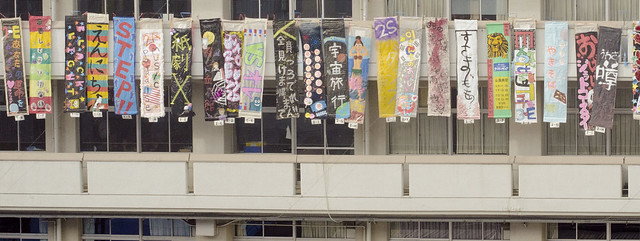
Problem Number 2:
Jack Halpern, CEO of the CJK Dictionary Institute, notes that one can say that "Japanese orthography is so highly irregular that it can be considered, without the slightest fear of being accused of hyperbole, to be a couple of orders of magnitude more complex and more irregular than any other major language, Chinese included
7.” His argument that Japanese (writing in particular, but the language in general) suffers from an extremely over-prevalent use of homophones. That while Japanese words, often distinguishable by sight on text, are often ambiguous and usage evident based only on context.
This is an inverse of the problem above: while one kanji character can have a seemingly infinite number of pronunciations linked to the logograph. As is the case with all homophones (such as “there,” “their,” and “they’re”) for the most part, the words sound the same: in Japanese, pronunciations overlap, differing only slightly from others by degrees of emphasis or aspiration or even by bounds
8 Such as 硬い, 堅い, and 固い, all are pronounced “katai” (かたい), meaning "hard," while “seikou” (せいこう) has more than twelve disparate meanings, among them being "success" 成功, "steel manufacture" 製鋼, "western suburbs" 西郊 and "sexual intercourse" 性交.
8. Jack Halpern offers an interesting example in his
introduction, using the phrase "ひのささないやしき" ("A Mansion with no Sunshine"), where he offers 12 different though equally acceptable translations, compounded by the fact that none of six "professional translators and writers" matched the "standard" form suggested by dictionaries.
So, as a new-speaker, how are you to know whether your friend is talking about a flower or a nose, both pronounced "hana" (はな: 花, 鼻)? Or whether it is a bridge, the edge, or chopsticks that are the topic of conversation (“hashi,” はし: 橋, 端, 箸)? Save for context, you can't, really. Every context has an appropriate interpretation and though, maybe contradictory on its surface, is really a truer expression of the concept signified.
In Japan, the balancing of ambiguity (and shades of contradiction) within contextual appropriateness is key to maintaining the function of society: it is the belief that one has a face appropriate for every situation. These are often distilled into two categories: a public/explicit face (the おもて: “omote”) and a private/implicit face (うら: “ura”). While in America, we would posit that two separate and divergent personas is inconsistent and insincere--where who we are is a sum of our disparate parts in unity that must agree and align like concentric circles of revelation around a singular ideological pole--in Japan, a "public" and "private" face that are nothing alike is hardly contradictory and can be quite admirable.
The belief is that by effecting a construct in public, you are not "pretending to be who you are not" for duplicitous personal gain, but, rather, serving a societal/political function. You are agreeing to submit parts of yourself for the purpose of cohabitation and success. We would call that "etiquette," or even “civility.”
The interesting aspect of the omote/ura dichotomy is that these faces are contextually driven: that your ura can be whatever you want it to be as long as your omote is in place when it is expected.
So you can be whoever you want to be when you're at the bar or in the red light district, as long as you are in your chair when the bell rings, wearing a dress shirt and tie. However, this also creates a fascinating dichotomy in which a person's "public life" is not at all impacted by his "private doings." That a businessman can be publicly inebriated after a "business party" is completely acceptable (and often times expected), and does not negatively impact his reputation amongst his colleagues as long as he does not appear at work inebriated.
While in America, it would be assumed that a remarkable business man who gets so drunk on a Tuesday after work that he is literally stumbling out of a hamburger restaurant has personal issues that will inevitably interfere with his ability to function at work (as well as reflect negatively upon the company that hires him), in Japan, the two faces are assumedly both true (that he is both a capable worker AND a lush), and should be seen as a fuller expression of who he is, rather than a contradiction.
Omote extends to virtually all public forms of society: almost as important as being "competent" is looking as if you are competent, and much of the system is based upon one’s ability to “appear” competent more than actual competence. Not, so much, that one is judged by his appearance, but by his ability to appropriate the correct signs for the context (a tie and dress shirt, riding leathers and matching helmet, etc.).
Though it is easy to see how and why the omote has it’s value, alas, it is difficult to see when the ura is allowed to find expression, or if it even has a place in the public space. But even within the two months I’ve spent in Japan has revealed that, though it may rub my Western sensibilities the wrong way and will always be difficult as an outsider to read and understand, the subtleties of personal expression are there; especially at a high school, where the students have not yet fully bought in to the value of the omote.
And, even then this is not to say that the teachers in the room are not merely a collection of suits, ties and indoor shoes. Sometimes it can appear that the amount of personal submission required to function in the public space is a tad overblown, and, really, the omote provides a framework for social stability that leaves just enough space for personal expression. That within the rigid structures there is enough ambiguity and subtlety in aspiration that provides for polyphony of expressions, if you’re attuned to the aspiration and the context. Which is refreshing to me because, even though from the outside much of it looks exactly the same, eventually--even to me--there will become a perceptible difference between 紙, 髪, and 神 (かみ: “kami” - paper, hair, and spirit).
